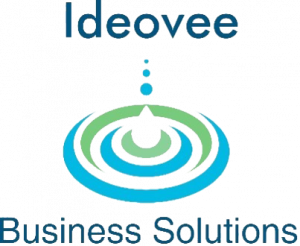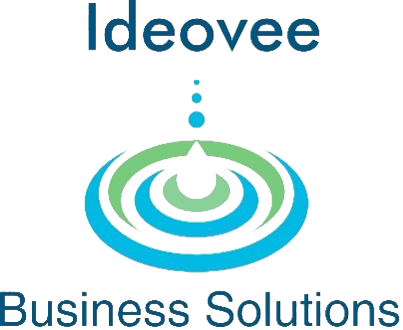
In heavy equipment and machinery sales, service, leasing, and contracting, the approach to business growth is as robust as the machinery themselves. Over the next seven articles, we will outline a strategic revenue pipeline growth framework tailored to the unique needs of businesses like “Big Bob’s Heavy Equipment Sales Inc.,” a theoretical heavy equipment enterprise. We’ll explore how account-based marketing (ABM) can be a game-changer. In this first part, we take a case study client example of Big Bob’s Heavy Equipment Sales Inc. through the steps of ABM.
Step 1: Account Selection
Setting the Stage: The Quest for Ideal Customers
Big Bob’s Heavy Equipment Sales Inc. provides heavy machinery solutions to the construction and government contracting sectors: sales, service, leasing, and contracted services. They aim to focus their efforts on prospects that not only need their heavy equipment but are also the most likely to become loyal, high-value clients. The challenge? Identifying these ideal customers.
Criteria for Account Selection:
- Proximity: Big Bob’s Heavy Equipment Sales Inc. decides that their ideal prospects should be within a 50-mile radius of their business. This allows them to provide localized, efficient service.
- Credit Rating: They prioritize prospects with a positive credit rating, ensuring a reduced risk of bad debt in their transactions.
- Engagement in Major Projects: Ideal prospects are companies involved in significant commercial or government construction projects, indicating a need for heavy equipment.
- Heavy Equipment Need: They focus on businesses that require heavy equipment and, potentially, contract operators for more extensive projects.
- Minimum Revenue: Their ideal customers should have an annual revenue of at least $50 million, ensuring a strong financial foundation.
Creating the Ideal Customer Profile (ICP):
Developing an Ideal Customer Profile is an essential part of the journey. The ICP is a reflection of your best customers. Here’s how Big Bob’s Heavy Equipment Sales Inc. created their ICP:
- Set the Criteria for “BEST” in the Contest of a Customer: Across the sales, marketing, finance, operations, customer service, and executive leadership team; as one unified Revenue Team they aligned on the factors that mattered most for the long-term growth and revenue acceleration of their business. At the outset, to keep this manageable, they limited it to their top 5 characteristics of “BEST”: (1) life time value of the customer including sales revenue, rental revenue and services revenue, (2) geographic proximity, (3) the customer’s success rate in winning large commercial and government contracts, (4) frequency of ordering, and (5) guess-timates at the amount of annual revenue and number of employees as an indication of stability and “here-to-stay” presence in the market.
- List Best Existing Customers: Applying the criteria they adopted for “BEST”, they listed their existing “BEST” customers, as the ICP should mirror their attributes.
- Analyze Existing Customers: By analyzing their current customers, they uncover the ‘why’ and ‘what’ that makes these customers the best.
- Compile Notable Attributes: They compile a list of attributes that stand out among their best customers, such as industry, company size, and location.
- Identify Customer Challenges: Understanding the challenges their best customers face in their industry helps fine-tune their ICP.
- Mention Unique Value Proposition: Big Bob’s Heavy Equipment Sales Inc. highlights what unique value they bring, aligning it with what their best customers seek.
- Document the ICP: Finally, they formalize the ICP, creating a document that serves as a blueprint for their ideal customers.
In Big Bob’s heavy equipment and machinery business, where personal service and tailored solutions for Big Bob’s customers matter, Big Bob’s Heavy Equipment Sales Inc. has embraced ABM growth principles, starting with strategic Account Selection and the development of an Ideal Customer Profile. Stay tuned for the next part of our series, where we’ll explore the world of ABM Step 2 – Account Insight. If you’re in this industry, this series is a competitive must-read, as we unveil the power of ABM tailored to the specific needs of heavy equipment and machinery sales, service, rentals, leasing, and contracting.
Step 1 Account Selection Implementation Quick Notes
People Required: The entire cross-functional revenue team at Big Bob’s gathers in a team meeting to provide input as a revenue stakeholder.
Time Required: Big Bob’s Revenue Team prides itself on completing ABM Step 1 Account Selection in under 2 weeks for each campaign and quarterly refresh of key prospective accounts.
Budget: Big Bob’s does ABM Step 1 Account Selection in-house, so there’s $0 budget other than internal costs. Big Bob’s did (12 months ago) get an ABM coaching to guide the entire Revenue Team through Account Selection the first time; one day training course in-person $5K.
Suggested KPIs: For Account Selection, Big Bob’s Revenue Team uses these top 3 KPIs:
1. Conversion Rate: Measure the percentage of selected accounts that move from Account Selection to connections and ultimately conversions to paying customers, indicating the effectiveness of Big Bob’s initial account selection.
2. Pipeline Contribution: Track the amount of revenue generated from prospect accounts selected in this stage to assess their potential impact on sales growth and also lifetime customer value.
3. Account Engagement Score: Calculate an engagement score based on initial interactions and responses from the selected accounts to gauge their interest in the Content Plan (step 4) and the Customer Journey (step 6).
Download your free copy of the entire Big Bob’s case study here: https://bit.ly/4aPoaWt

